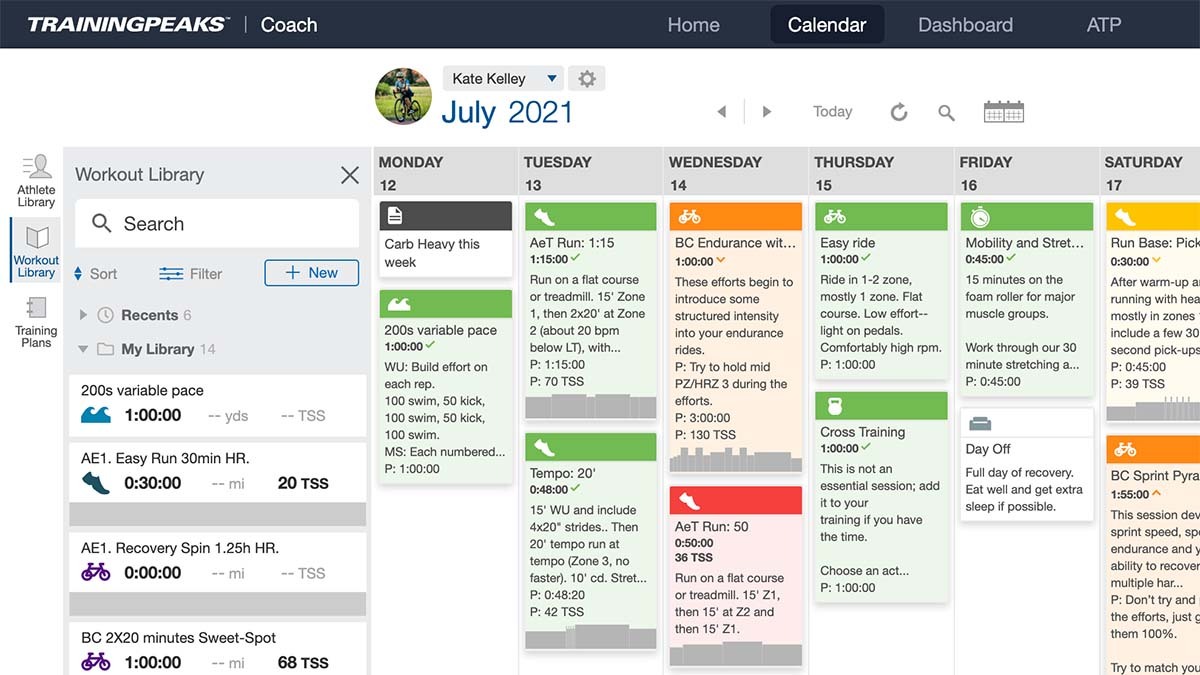Many athletes maintain a log or journal to keep track of their training. Before modern digital options existed, a log was often a calendar or notebook where an athlete could record the basic details of each workout. While this method still has its merits, an online workout log like TrainingPeaks takes the process to a higher level while providing the simple elements that make a training log essential for long-term success, including objective and subjective record-keeping and analysis. By keeping records, you’ll learn from your successes and failures to build motivation and confidence.
Digital Workout Logs Collect and Analyze Data For You
A training log is a place to collect data. With the wide availability of activity trackers, most of the work here is done for the athlete and what’s left is to put the data somewhere that allows the addition of subjective personal comments. TrainingPeaks accomplishes this by automatically downloading workout data, including distance, duration, and heart rate. Athletes follow this up by accessing the journal that accompanies the workout on the calendar and recording subjective evaluations in the post-activity comments. These can be short and straightforward reflections such as ‘felt great’ or ‘kind of tired and knee hurts’ to longer, more descriptive responses. Subjective personal comments are an essential addition because they help explain the data captured on the wearable fitness tracker.
Other beneficial data collection options include sleep, heart rate variability, nutritional intake, and hydration. Again, many fitness trackers will collect this data and send it directly to TrainingPeaks or make the information available to the user to record in their journal.
The key to collecting data is the ability to analyze and learn from it. TrainingPeaks provides detailed analysis over time that highlights trends, categorizes effort, and offers specific fitness, fatigue, and form data based on training load. Still, even a written journal allows the user to go back in time to assess how their training impacted goals.
Track Your Training to Learn From Success and Failure
A workout log is essential because an athlete can correlate success and failure with the elements of their training. For example, after racing in a marathon and coming up short in the last 10K, a log might highlight a lack of running long on fatigued legs during training. Or perhaps in a retrospective training log examination, it’s evident that a lack of sleep and a highly stressful month of work might have derailed recovery. On the flip side, perhaps that added day of swimming long demonstrated improved 100 m times that carried over to a PR triathlon swim. Whatever the result, recognizing trends in mental and physical preparation allows for more specific and successful future training and racing.
Training Logs Offer Motivational Features
Training logs can spur motivation. Athletes set goals and can see both the process and the product within the data. TrainingPeaks color codes workouts in red, yellow, and green to indicate compliance with set workouts, urging you to attain green weeks. Tapping the energy of objective data (look at how many miles I ran last month) and subjective data (those workouts made me feel great even though they were hard) is enhanced with a good workout log.
Boost Your Confidence With a Consistent Workout Log
There is an enormous boost from looking back at the months of training leading into a race. While some race day anxiety is normal, reviewing the many hours of training and effort that led to that day can override negative emotions. A training log can also give confidence after injury or time away from training. Sometimes human brains like to focus on the negative, but a workout log can highlight the positive. You’ve done this before; you trained and succeeded and can surmount new challenges. After years of keeping a training log, there are mountains of data proving your durability and potential — just begin the process again and keep going.
Maintaining a workout log is an indispensable tool for every level of athlete. It allows for the collection and analysis of data that can provide motivation, learning, and confidence. In addition, it can help prevent injury and provide better, more individualized training. Athletes are built over years, not weeks, and a well-kept training log is one secret to their success.









